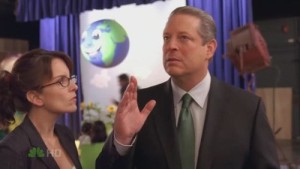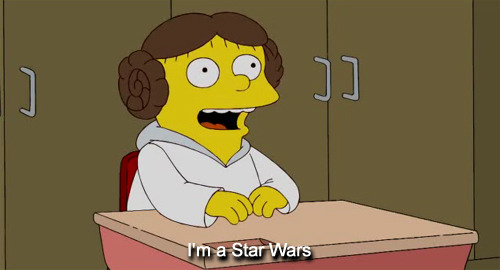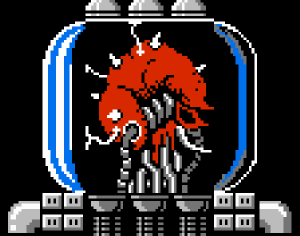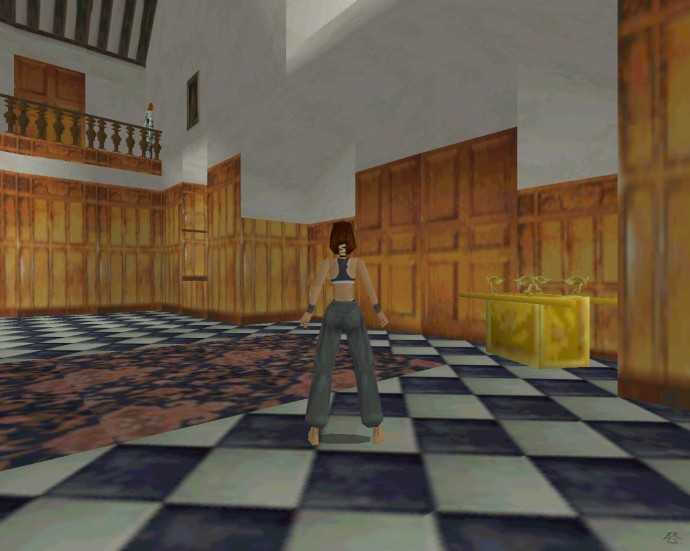As I wrote last week, Candy Crush Saga doesn’t get King into trouble with Popcap because King didn’t copy Popcap’s particular expression of the “match-three” game idea – Popcap and King both made their own separate expressions of a “match-three” game. Obviously, straight up lifting sprites, songs, characters, etc. from another game and putting them verbatim into your game is definitely copyright infringement.
But sometimes, one person’s expression can get awfully close to another person’s expression without necessarily copying it pixel-for-pixel. In those situations, we still might have some copyright infringement on our hands (and IP lawyers may sense a great disturbance in the Law).

“Quiet! Somewhere… a copyright is in trouble. I have to go!”
Tetris by any other name
Tetris was released way back in 1984, and its been immensely popular pretty much ever since. Much of the appeal of Tetris is in its simplicity (e.g., the seven pieces – or “tetrominoes” – represent the seven possible combinations of four squares connected orthogonally, the pieces fall down a 10×20 grid, etc.), but this simplicity also makes cloning Tetris a fairly simple task. They say “imitation is the sincerest form of flattery,” and over the years, Tetris has been flattered over and over again. As such, The Tetris Company, the company that holds the rights to Tetris, has been pretty busy doing its best to stomp out all these Tetris clones like a game of cease-and-desist whack-a-mole. (Someone should make a game called “cease-and-desist whack-a-mole.”)
One recent attempt at Tetris flattery was so flattering that it actually went all the way to a courtroom. In 2009, a company called Xio Interactive released a Tetris clone called Mino on Apple’s App Store. To Xio’s credit, while developing Mino, Xio did contact the Tetris Company in an attempt to get an official license for Tetris. Of course, Mino would be competing with the official Tetris iOS app, so the Tetris Company refused to give Xio a license. Xio’s response was essentially, “Meh, we’re doing it anyway,” and Xio went on to release its own Tetris-esque game for iOS.

“I’ll make my own
Tetris! With blackjack! And hookers!” -Xio Interactive
Not surprisingly, Xio was subsequently sued by The Tetris Company. (Tetris Holding, LLC v. Xio Interactive, Inc., 863 F.Supp.2d 394 (D.N.J. 2012), if you’re into that sort of thing.) Now, when someone is being sued for copyright infringement, you might expect the defendant to deny copying the plaintiff’s game, or that the plaintiff’s game merely served as inspiration (e.g., Fighter’s History), or something else of that sort.
Not Xio. During the case, Xio openly admitted that its game wasn’t just “inspired” by Tetris, but that “its game was copied from Tetris and was intended to be its version of Tetris.” Yep, that is a direct quote from the record. (Have to give them points for directness, at least.)
Xio’s defense was that while they did copy Tetris, they did it “in such a way so as to not copy any protected elements after diligently researching intellectual property law.” So Xio’s defense wasn’t that they weren’t really copying Tetris, but that they consulted with an IP lawyer to make sure they were copying it in a way that wouldn’t get them into trouble. More specifically, they argued that they only copied the rules of Tetris – essentially, the “idea” behind Tetris – and that their game was merely their own expression of those rules.
Merger Doctrine
Copyright protects expressions of creative ideas (art, literature, music, etc.). Copyright doesn’t protect functional elements (like game rules), because that’s what patents are for.
Copyright protects expressions of creative ideas (art, literature, music, etc.). Copyright doesn’t protect functional elements (like game rules), because that’s what patents are for. To illustrate this difference, consider the 1990 NES game Dr. Mario. Nintendo actually has a patent on the game mechanics of Dr. Mario, but the expressive elements of Dr. Mario would be protected by copyright (like the particular colors and shape of the pills, the design of the germs, Mario up top hurling the pills into the bottle, etc.). Xio argued that if the Tetris Company wanted to protect the rules of Tetris, they should have gotten a patent.
Most of the time, there’s a fairly distinct difference between a game’s functional elements (game mechanics) and creative elements (artwork, music, story). But sometimes, an idea is so simple that there are only a very limited number of ways it could possibly be expressed. In these instances, the expression and the idea are said to “merge” into each other (hence, the merger doctrine). When that happens, the expression can’t be protected by copyright because it would basically mean protecting the underlying idea with copyright too, and we really don’t want that to happen.
One example of the merger doctrine came up during one of the many fistfights between Microsoft and Apple in the ‘90s. (The citation for this particular fistfight is Apple Computer, Inc. v. Microsoft Corp., 35 F.3d 1435 (9th Cir. 1994).) Apple accused Microsoft of infringing on Apple’s copyright of the “trash can” icon in their GUI, but the court found that the trash can icon was virtually the only practical way of expressing the idea of deleting (or “throwing away”) files. The merger doctrine meant that the idea of deleting files in a GUI and the expression of that idea as a trash can icon “merged,” such that a trash can icon was an unprotectable element of the GUI. Therefore, Apple couldn’t stop Microsoft from using a trash can (if anything, Apple could only stop Microsoft from using an exact copy of Apple’s trash can).
Xio tried to argue that the rules of Tetris were so simple that there were only a limited number of ways they could be expressed, so the merger doctrine should apply. Granted, there were a number of elements that Xio copied where the merger doctrine might have been applied if evaluated individually: showing the next piece to fall, “garbage” lines of random junk at the start of some games, “ghost” pieces that show where a piece will land, etc. (For example, how many different ways can you think of to show the next piece to fall, other than showing the next piece to fall.)
However, the judge concluded that Xio’s copying of all of those elements in the aggregate constituted “wholesale copying,” the only purpose of which was “to avoid the difficult task of developing its own take on a known idea.” The judge also concluded that Xio copied the overall look-and-feel of Tetris (i.e., the visual expression of Tetris). I mean, hell, many of the pieces in Mino were even the exact same color as those in Tetris.

The fact that I can’t even tell right away which one of these is
Tetris and which one is
Mino is probably a bad sign for Xio.
Trade Dress
Though most of this case was about copyright, it also briefly touched upon trademark law. Unlike copyrights and patents (which exist to protect creators), trademark law exists to protect the public – specifically, to protect consumers from confusion in the marketplace.
A trademark is “any word, name, symbol, or device, or any combination thereof” used in commerce to identify a specific product or manufacturer. The purpose of trademark law is to protect the fragile minds of consumers like us: if anyone could use anyone else’s company name or logo on their own products, unscrupulous manufacturers could try to trick consumers into thinking a product was made by someone else. For example, a new company could try design or market their product to look like it was manufactured by a more reputable or established company, so as to benefit from the other company’s reputation.
Trade dress is a subset of trademark law that protects a product’s design or packaging that identifies its source: where trademarks refer to a name, logo, or slogan, trade dress refers to a particular “look.”. To qualify for trade dress protection, the design must have acquired a “secondary meaning” in the public: that means it has to be so pervasive in the market that a significant number of consumers would recognize the design and associate it with a particular manufacturer.

Nobody reading this would look at this cardboard box of food and think, “Hey, can you tell me where you got that? Because I have
absolutely no idea.”
Tetris has been around for so long and has achieved such a level of brand-awareness that many people can recognize the distinctive visual indications of Tetris (e.g., the specific colors used, the styling of words and game screens, etc.). Xio designed Mino to look so much like Tetris that a consumer browsing the App Store could easily have mistaken Mino for an officially licensed version of Tetris. (A more cynical person might think that was Xio’s intent.) If a consumer bought Mino from the App Store thinking it was a “real” version of Tetris, then Xio would be riding on (and profiting off of) the coattails of the Tetris Company. As such, court concluded that Xio infringed on the Tetris Company’s trade dress.
tl;dr: If you copy pretty much everything about a super popular game, and you make your copy look so much like the original game that people will confuse the two, you’re gonna have a bad time.


















 “Quiet! Somewhere… a copyright is in trouble. I have to go!”
“Quiet! Somewhere… a copyright is in trouble. I have to go!”
 The fact that I can’t even tell right away which one of these is Tetris and which one is Mino is probably a bad sign for Xio.
The fact that I can’t even tell right away which one of these is Tetris and which one is Mino is probably a bad sign for Xio. Nobody reading this would look at this cardboard box of food and think, “Hey, can you tell me where you got that? Because I have absolutely no idea.”
Nobody reading this would look at this cardboard box of food and think, “Hey, can you tell me where you got that? Because I have absolutely no idea.”